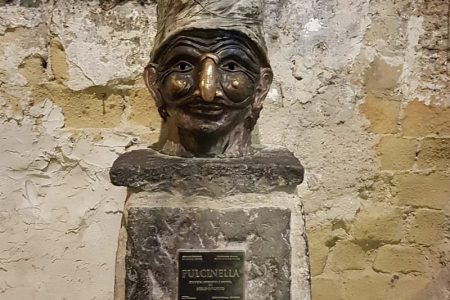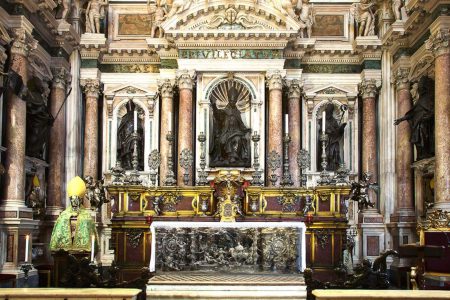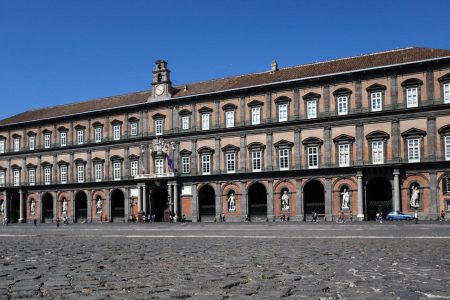Table of Contents
Naples is often associated with the sea, at sunshine, at the pizza and the warmth of people, but let's not forget about thecollective imagination and of the beliefs typical of the popular culture that are now intrinsic to the everyday life Of every citizen.
These include the neapolitan superstition is featured in the thinking, of ways of doing and acting in the Neapolitan reality.
"To be superstitious is to be ignorant, but not to be ignorant brings evil." -Eduardo De Filippo.
In essence, even those who do not want to believe it, unconsciously always leave the benefit of the doubt And acts according to the "just in case" rule.
The origins of superstition
According to the story, superstition in Naples intensified especially in the Eighteenth century, when the King Ferdinand IV of Bourbon hosted at his court thearchaeologist Andrea De Jorio, highly regarded in his work but despised for his bad reputation by jettor that haunted him. As chance would have it, the next day, certainly for natural causes related to old age, the king died suddenly: from then on the people did nothing but believe even more in the jella And in all that followed.
Jetting
The term jetting comes from the Latin jacere sortes meaning "to cast fortunes, to enchant"; the jester, in popular parlance, is that person with whom is associated the unintentional ability to bring bad luck with only the presence, also because of a feeling of envy, pessimism and malevolence towards each other. According to the careful description of Alexander Dumas, this figure is often depicted with a thin face and body, a livid complexion, the curved nose and the sad eyes, often covered by dark glasses: you will surely have happened to recognize these details in a famous image of Totò.
This modus vivendi is also enclosed in expressions dialectal and proverbs recurring; for example, in Naples we often hear about the so-called "dry eyes", as in the classic phrase ""l'uocchie sicche so' peggio d "e scuppettate," which stands for "the evil eye Is worse than rifle shots." In cases like these it almost results in forces inexplicable in nature supernatural, which would even have the ability to influence or change the course of events.
You might be interested
Visit Naples in half a day: guided tour from Piazza Dante to Piazza del Gesù
per person Book
Admission ticket to the Neapolis Sotterrata and the Basilica of San Lorenzo Maggiore
per person Book
The Museum of the Treasure of San Gennaro and the Royal Chapel in Naples (entrance fee)
per person Book
Private guided tour of the Royal Palace of Naples
per person Book
Objects and gestures against the evil eye
But one cannot be expected to submit to these consequences, so the Neapolitan people have come up with several remedies to ward off the evil eye, which have now become habitual gestures in everyday life.
The Neapolitan horn
Perhaps the most famous, even symbolically, is "'o curniciello": tradition dictates that the classic horn from the characteristic red color o coral, should be given as a gift in order to fully fulfill its function. Specifically, the giver should prick the palm of the hand Of those who received it with the tip of the horn.
The horn's origins go back a long way: let's take a trip back in time to theNeolithic age, when at the entrance of the sheds horns were already being displayed as a sign of power and fertility, and then moved on to theRoman era, in which were offered to the goddess Isis in exchange for protection towards the animals. The horn also appears in the Greco-Roman mythology, when it is reported that Jupiter donated a prodigious horn to his nurse to say thank you. Walking through the streets of the city, it is impossible not to notice this small object in the windows of stores and workshops, especially if you go to San Gregorio Armeno.
Touching your genitals
Not really from etiquette, but surely the most common one is the typical gesture of touching one's male genitalia; yes, you read that correctly! There are few who are not familiar with this superstitious method, which even dates back to the ancient Romans, for whom the male member, a symbol of prosperity and fertility, was almost sacred in its auspicious and protective value, and for this reason they were also posted of its depictions at theentry of a home.
The horseshoe
Another object that metaphorically relates to this context is the horseshoe, strictly facing upward. At first glance you might not think so, but according to many this form refers to thefemale genital apparatus; it would then serve as temptation towards the malignant, who, in order not to be distracted, would avoid the houses that use it. This ideology relates to the history of San Dunstano, an English saint who made a pact with devil: he would disassemble the iron on his clogs only if he kept his promise not to enter homes that would use this "amulet“.
Of historical derivation, however, is the idea that iron for the Romans was a lucky charm because, when the officers on horseback lost a hoof during the march, all thearmy, at the end of his strength, would finally rest.
As early as the eighteenth century, it was customary to make gestures to deflect negative influences such as a wary glance, as spit three times on the ground (I know, not very polite, but it was said to be a purifying act), or make the horns downward (the pointed horns indicate the defense), touching his genitals or wearing a tooth by pig (sacred animal for many cultures).
Friday the 17th
Numbers and days can also have a negative connotation: in the neapolitan smorfia the number 17 symbolizes the misfortune, while the Friday Is the day he died Jesus; consequently, the combination of Friday and the 17th is tragic for Neapolitans, who always feel on this day that something negative can happen.
The broken mirror
It can happen to anyone to break a mirror, right? Here, try not to make it happen. Breaking a mirror corresponds to 7 years of bad luck: since ancient times, especially in East, it is strongly rooted in the idea that mirrors can capture thesoul of a person; their breaking so it would cause a damage to our side sacred. According to a'optics plus practice, on the other hand, the ancient Romans associated the number 7 with bad luck because, as mirrors were worked with fine materials, to recover the money lost would have taken a good 7 years of work and sacrifice!
The upside-down bread
If you are at the table with Neapolitans, don't flip never the bread! Bread in the Christian faith represents the body of Christ, so to overturn it would be a strong disrespect.
The black cat
A great classic is that of the poor black cat running through the road before our passage, pointed out as a great sign of ill omen. This belief dates back to the days when people traveled in carriage by night: the horses, frightened by the two yellow eyes which suddenly appeared along the dark route, became agitated, causing trouble for passengers.
Sometimes we perform acts without asking why or how they came about.
As you can well see, there are endless stories behind every belief, and these you have just read are just a few!
What about you, are you superstitious or are you just pretending not to be?





0 Comments